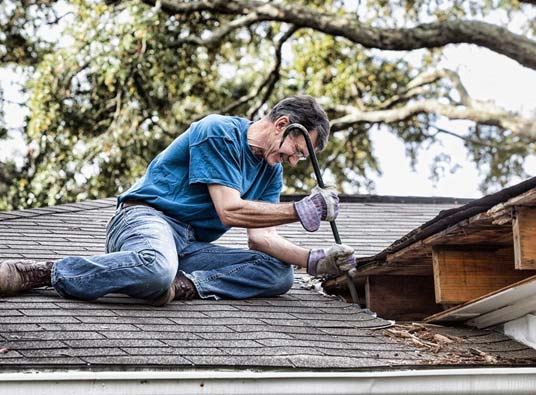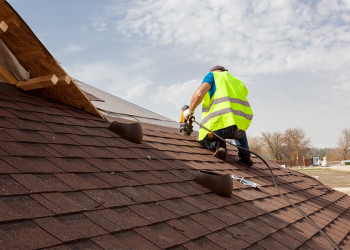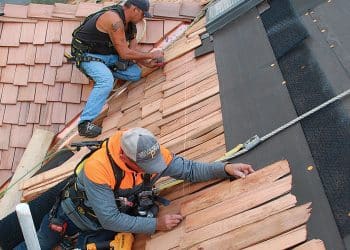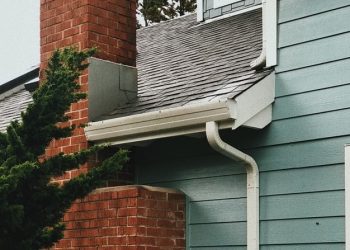
Taking care of your house not only improves the aesthetics of your home but will also increase your home value on the market. Roofing is an important aspect that you shouldn’t ignore under any circumstances. Getting quality materials and trained contractors from the best roofing companies in Kentucky is a great way of ensuring the longevity of your roof.
Reasons For Leaking Roofs And How To Prevent Them
Leaks tend to be a significant problem in most households, and ignoring them will cost you heavily in the future. If you are going to prevent leakage, you must understand the causes, so you can apply an effective technique. This means getting to the root of the problem before trying to fix a situation.
What Are Some Of The Common Reasons For Leaking Roofs?
Cracked Flashing– When a roof is under construction, the contractors will install thin metal pieces on the joints of the roof and under the shingles, thus creating a water-proof barrier. The flashing is sealed with tar, and when it corrodes it exposes it to elements. You will notice large cracks if the flashing is broken. Also, the flashing might leak if it shifts in position.
- Solution: Have your contractors install pre-manufactured flashing in every roof opening. It should cover the dormers, chimneys, and skylights. This way, all water is directed away from the vulnerabilities on your roof.
Attic Condensation- If your attic is poorly ventilated and lacks decent insulation, it results in condensation that leads to leakages and water damages. Also, condensation results in the growth of mildew and mold in the house. Condensation could be a result of the high location of the attic. As such, space is caught between the extreme temperatures in the outdoors and the indoors.
- Solution: Constantly measure the temperature and the humidity in the attic. A lot of heat escapes from the floors beneath and it’s your job to ensure that none of it gets trapped in the attic. Ventilate the attic regularly to decrease the humidity levels and reduce the temperature.
Broken/Damaged Shingles- It is very easy to identify missing shingles, and all you have to do is look up. Shingles form the outermost layer of the roofing structure, so you can tell from different colored spots on the roof. If you live in a storm-prone area, you might find them littering your compound. If you climb on the roof, you might also notice huge cracks or loosened shingles.
- Solution: Protect your shingles from storm damage by installing a layer of roof deck protection. This underlayment also helps to keep the shingles in place and prevent water from sipping through. Also installing hip and ridge cap shingles to protect your roof against damage from the wind.
Clogged Gutters- The most obvious tell-tale of this problem is leaves or debris sticking out. If you notice a decrease in the amount of water flowing from the downspout, it could be a sign of clogged gutters. The purpose of the gutters is to direct water away from the roof, and when they clog, they cease to function. As such, water tends to seep through the roof if water accumulates.
- Solution: Make a habit of inspecting your gutters often to make sure they are in good shape and functional. Have your gutters cleaned at least twice a year by professionals from a roofing company in Edgewood Kentucky. If you have pine trees on your compound, inspect your gutters tri-annually. The weight of gutter debris can rip it off from the house, causing more damage.
Age of the Roof- When roofing materials are exposed to weather elements for a long period, they tend to become weak and fragile. As such, they cannot protect the house from leaks during winter. Over-extending the lifespan of your roofing materials will only cause more damage.
- Solution: Most roofing materials have a lifespan of about 25-30 years. Once your roof hits the 20-year mark, you should start budgeting for a roof replacement. The roof has been through a lot of wear and tear, and Band-Aid solutions will cost you in the future. It might be financially tempting to over-extend the life of your roof, but if it damages, you’re in for a financial haul. Poor maintenance and damage may shorten the life span of the roof regardless of its material.
Roof Vents Are Broken- The purpose of roof vents is to get rid of excess moisture from within the house. You can easily identify vent leaks because they tend to leave dark spots. Vent leaks are a result of broken flashing which is used to secure them in place, or when the roofing material starts to decay.
- Solution: If your vents are poorly installed, they may leak if exposed to the elements. Have a certified contractor come and look at the vents to ensure they are sealed and waterproof. To prevent the risk of leaking, have them resealed once in a while, especially if you live in wet areas.
Valleys Aren’t Well Covered- The valley of the roof is where the two planes join, and it is often sloped. If this area is not sealed off properly, rainwater or melting snow can easily get through as it runs down. Wet spots along the seams of your roof are a sign of leaking valleys.
- Solution: There are several reasons why your roof might be leaking from the vent, but it is not advisable to try DIY. Reach out to a professional instead. It is because fixing broken vents might be a complex process that might take too much of your time. However, a possible solution involves laying a leak-proof barrier along the valley.
In Conclusion
There are many other reasons why your roof might be leaking, but these are the most common causes. Taking care of your roof will give your longer and quality service. Different roofing materials offer different levels of resistance to the elements. If you live in wetter areas, it would be advisable to settle for materials that are more water-resistant. Also, have your roof installed or repaired by a reputable company.







